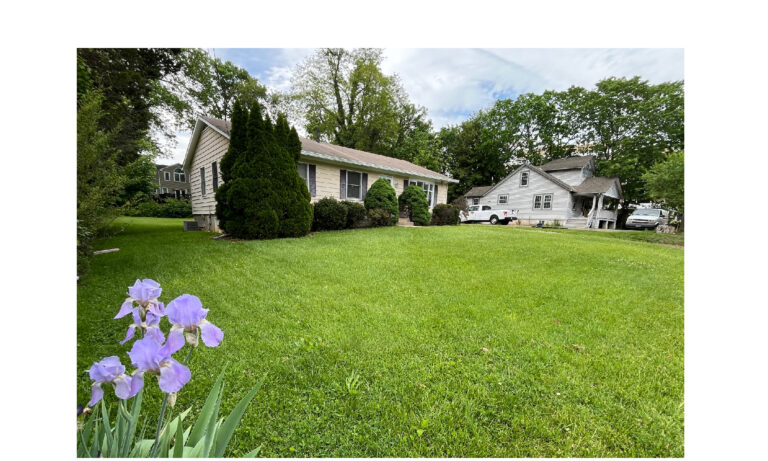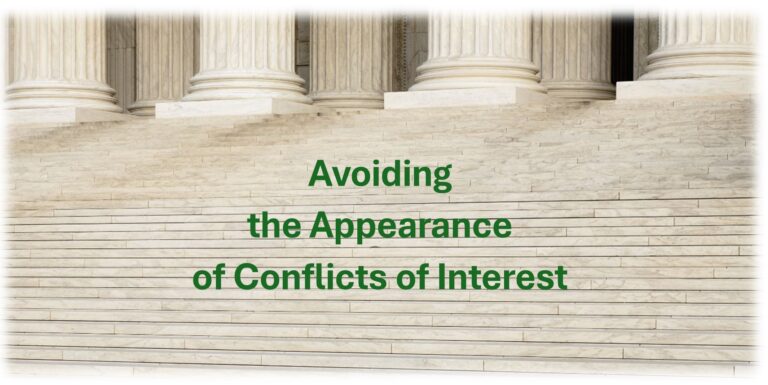Madison Homes Handed Setback on 12-Townhouse S Lee Project
Summary
- City Council discussed the proposed Madison Homes townhouse project on S Lee during its June 2, 2025, work session.
- The staff report surprised several Council members by concluding that the project is not consistent with the Comprehensive Plan and 2016 West Broad Small Area Plan, which focused on enhancing the potential for development on Broad through the future rezoning of adjacent R-1A lots to B1 or T-Zones.
- Three Council members expressed broad concerns about or opposed the proposed townhouse project, while the Mayor and Vice Mayor suggested that the timing wasn’t right – preferring to first see the impacts from Madison Home townhouse projects currently underway on Park Avenue.
- The next step is a Planning Commission work session with Boards and Commissions on June 18.
The staff’s take on the project
For background, the Madison Homes project is described in the Pulse post, Madison Homes Seeks to Build 12 New Townhomes on S Lee Street, May 12, 2025, and Comprehensive Plan and future land use issues are detailed in our post titled Land Use, Rezoning, and the City’s Plans – A Framework for Considering New Townhomes on S Lee Street, May 9, 2025.
Key issues identified by the staff in its report to the City Council include the following:
(1) Comprehensive Plan – Future Land Use: Staff found that Madison Homes’ proposed project is inconsistent with the planned future land use for the low-density residential (R-1A) properties at 106 and 108 S Lee. The Future Land Use Map of the 2005 Comprehensive Plan designates these lots as future “transitional” lots in order to create “a deeper, more viable commercial corridor along West Broad Street.” The Plan provides, “this change was made in order to widen the very narrow swath of land on the south side of West Broad Street that was available for commercial use, and therefore very difficult to redevelop.” Transitional lots were intended to “allow for even greater commercial redevelopment opportunities, rather than residential development.”
Staff found that Madison’s proposed use would impede the Comprehensive Plan goal and that the “Transitional” designation in the Future Land Use Map would not support the requested residential townhouses. Such development would not have been possible prior to the new transitional zone ordinance adopted in 2023. Moreover, according to City staff, “the Comprehensive Plan Chapter 4 Goal 7 specifically discourages zoning changes in the City’s well- established single-family detached neighborhoods to higher density residential use.”
(2) West Broad Street Small Area Plan: The 2016 Small Area Plan supports the land use policy of the Comprehensive Plan and envisions the consolidation of small parcels in this area to support mixed-use development, rather than purely residential development.
(3) Neighborhood Character: The S Lee lots are part of a well-established, single-family detached neighborhood; Madison’s proposed rezoning to T-1 transitional zoning would alter the neighborhood’s character.
(4) Proffers: Proffers are voluntary commitments as part of a conditional zoning process designed to mitigate potential impacts and provide community benefits related to the proposed project. Staff indicated that they should not repeat elements of zoning requirements and that the City Council could not delegate legislative authority to the City Manager (proffer #3).
(5) Infrastructure: Staff noted that sufficient infrastructure is a key factor in justifying a rezoning. In this case, further analysis is needed regarding stormwater, sanitary sewer, and water pressure for fire suppression. “Any deficiency in the infrastructure should be properly mitigated.”
(6) Physical impact: Staff found that the Madison Homes project would have a negative impact on the existing neighborhood that would not be offset by any compelling public purpose. Although the proposed project meets the requirements of the T-1 Transitional District, the townhomes would be significantly taller than the adjacent single-family home. If the project is approved “over staff’s objections,” staff recommended that either the townhomes’ height be reduced or that the setback be further increased to minimize the negative physical impact.
(7) Affordable Housing Units: Staff said that Madison Homes’ commitment to one affordable dwelling unit “falls a little short.”
(8) Buffering: Staff suggested that a fence or equivalent physical barrier be installed to buffer both the commercial building and the neighbors, rather than landscaping alone.
Staff noted that in order to zone the two lots for townhouses:
(a) The applicant would have to have at least 3 acres of land on which to build townhouses per R-TH Townhouse Residence Districts (Section 48-330 City Code); or
(b) The applicant would have to demonstrate that the land is appropriate for the “T-Zone” designation created in 2023.
This application doesn’t meet either of these criteria, in staff’s estimation. The two S Lee lots have only 0.5 acre of land in total. And the land is not appropriate for the new T-Zone criteria, according to City staff: “When Council adopted the T-Zone ordinance in 2023, it also mapped the land areas it deemed appropriate for that zoning designation. The subject property was deliberately excluded from that legislative action.”

Madison Homes’ counterarguments
Madison Homes and their legal representative made the following counterclaims in their presentation to City Council:
- Madison Homes is the first developer to build townhouses in the City in the last 25 years, and also built the last ones 25 years ago, all on Park Avenue. The firm focuses on infill development and unique design specifically for the site.
- The two lots on S Lee are at the southern edge of the Planning Opportunity Area designated by the City. These lots and those to the west, east, and north have been planned for transitional or business use, some since 1997 and some since 2005.
- The 2016 Small Area Plan plans for smooth transitions between the commercial area on Broad Street and the residential homes outside the Planning Opportunity Area, envisioning either transition or B1 commercial on these lots, even though they are currently zoned R-1A. Neighborhood transitions can be either via architectural design, signage, hardscaping, or landscaping to create a “hard edge” between the two areas.
- A key objective for the project is to “increase housing diversity and provide for-sale housing opportunities,” consistent with the City’s housing priorities for 2024-2025, through the provision of buildings that are compatible in scale and design to the neighboring residential area. Townhomes currently provide for only 10% of the housing in the City, and options between single-family homes and high-rise apartments are scarce.
- Half of the 900 potential buyers expressing interest in the new townhomes on Park are from within the City, either moving up from apartments or down from existing single-family homes.
- To implement the City’s policies, either through a smaller multifamily building on W Broad or a townhouse development, rezoning will be required. Townhomes serve as a buffer and a step downward from commercial density along Broad and are the most compatible with neighborhood homes. This project would provide less density, less coverage, substantial buffering, and more sensitive architectural design than other options. Consolidation with 701 W Broad Street could well be less desirable, with a substantially taller building closer to the neighboring homes and a more abrupt transition in height. Another alternative would be the construction of potential 8,000 square-foot homes on these lots.
Council members express concerns
At their June 2 work session, there was little to no strong support for the proposed townhouse project on S Lee.
- Council Member Laura Downs introduced the discussion by saying she was quite surprised by the strong sentiment expressed by staff. She noted the City needs more townhouses and condominiums. However, Park Avenue is much wider than S Lee, which experiences a lot of cut-through traffic due to the light on Broad and has had traffic calming measures in the past. Additional parking on the street should be anticipated. She said staff had some compelling reasons not to approve this project. If it were affordable housing, as a compelling public purpose, Ms. Downs could see the project going forward.
- Council Member David Snyder said that the leading theoretical argument for the Madison Homes project is that it will protect the surrounding residential neighborhood, but that neighborhood, in fact, does not support it. He cited challenges to infrastructure and transportation, and the fact that the proffers don’t begin to cover the public service costs of the project. Most importantly, he emphasized that proceeding with this development would say that single-family areas can be “up zoned” and that is such a major change that it deserves much broader public consideration. Mr. Snyder said there is no question that it would set a precedent for other ways to undermine single-family zoning and degrade neighborhoods. He was very skeptical about moving ahead with the project and hoped that the City’s process would give equal time to citizens, now limited to speaking for three minutes, compared to the time provided to the developer.
- Council Member Erin Flynn said she shared the concerns of Council Members Downs and Snyder. She felt that the townhouses Madison Homes is building on Park are denser than they should have been, and that the side view of the proposed project is jarring for the neighboring house. The original T-Zones would have been developed differently, she said. Ms. Flynn was concerned about the sanitary sewer issue, particularly since we are still awaiting an agreement on future infrastructure with Fairfax County. Moreover, the S Lee site includes a fair amount of green space and tree canopy, and City calculations don’t reflect the loss of their current absorption capacity. Other concerns included the difficulty in navigating a narrow drive aisle and the potential impact of additional parking on the street.
- Both Mayor Letty Hardi and Vice Mayor Debora Schantz-Hiscott indicated they were generally supportive of townhouses, but expressed concern about the timing of this project. Two townhouse projects are currently underway on Park Avenue, and they preferred to see the impacts of those projects first. Mayor Hardi said that the density at the Broad Street intersections with Oak and Lee should probably be less dense than at Haycock, Washington, and West Streets. The building at 701 W Broad might not develop for 10-20 years. She said the City should take another look at the Comprehensive Plan and its land use policies in the meantime.
- Council Member Justine Underhill asked if the developer was continuing to have meetings with the neighbors and was told there is no ongoing dialogue. She was optimistic that the neighbors’ concerns could be addressed.
- Council Member Marybeth Connelly asked if this makes sense as a one-off project, when other lots had been projected for future transitional use.
Principal Planner and Interim Deputy Director of Planning Henry Zhang summed up that this is a proposed rezoning for lots that are not now transitional. The rezoning process should consider what is best to protect the neighborhood.
References
- City Council Work Session, June 2, 2025. This official video will not display properly on a small screen as it includes the agenda.
- City Council Work Session, June 2, 2025. YouTube video.
- Review of 106 & 108 S Lee Rezoning Application (staff report) for June 2, 2025, Council Work Session.





